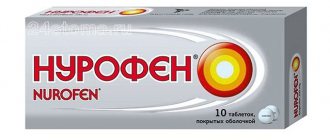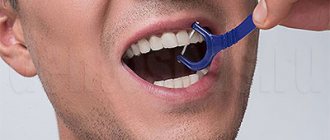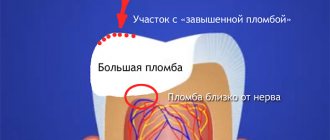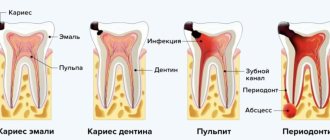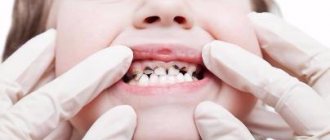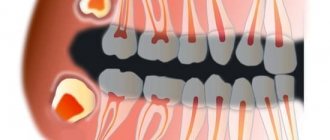Cleaning dental canals is one of the most painstaking, and sometimes even precious, dental procedures, the quality of which determines the success of the entire treatment. The main problem is that the dentist is working with the hidden part of the tooth. These channels are very difficult to get to and cannot be seen with the naked eye. But whether the therapy will be successful often depends on the accuracy with which the number of dental canals is determined - it may vary from person to person. In addition, the doctor must be aware of their exact size and length. And an x-ray of the tooth will help him with this.
What does the canal consist of and why should you clean it?
The inside of the dental canal is filled with pulp. It is a soft tissue penetrated by nerve fibers. In addition, it contains blood and lymphatic vessels and connective tissue. When an inflammatory process occurs in the pulp, the soft tissues inside the canal are also affected. Sooner or later it comes to such an extremely unpleasant thing as their necrotization.
The cause of inflammation can be caries or pulpitis. Therefore, in order to relieve the patient of acute pain and prevent tooth extraction, it is necessary to clean the dental canals of dead tissue.
The capabilities of modern dentistry in the vast majority of cases make it possible to completely cure and save the affected tooth, while just 10 years ago such inflammation invariably led to surgical removal of teeth.
Important! A disease that has become chronic may well be asymptomatic.
What foods and drinks should you limit to keep your teeth healthy?
It is worth minimizing the consumption of certain types of food. These include, first of all, sweets, primarily non-natural (produced by the confectionery industry), soft ones that do not require chewing effort, as well as sticky and stringy ones. Sugar present in the oral cavity accelerates the proliferation of pathogenic bacteria. Many sweets stick to teeth, which contributes to tooth decay. Sugar-containing carbonated drinks and chewing gum are especially harmful to the oral cavity.
A large amount of red meat, fatty and fried foods contribute to the intensive proliferation of pathogenic bacteria in the oral cavity. Foods rich in acids that corrode tooth enamel should be eaten with caution. These include some citrus fruits, fruits, juices, marinades, and some canned foods.
You should consume less drinks and foods with a lot of caffeine, which removes calcium from the body. If you are used to eating a lot of chocolate, drinking strong tea or coffee (they, by the way, darken tooth enamel), then you should consume more foods high in calcium.
Stages of cleaning dental canals
To properly clean the dental canals, the dentist must carry out the following necessary manipulations (step by step):
- Applying a protective lining to the area adjacent to the affected tooth. First, injection anesthesia is performed (or dental treatment is offered during sleep), and then the doctor places a protective pad around the tooth in the form of a thin sheet of rubber. Since the main goal pursued in the treatment of affected dental canals is to cleanse them of bacteria from the inside, the protective overlay reliably protects the tooth from saliva. After all, saliva contains many bacteria, and if the affected tooth is not isolated, then new colonies of bacteria will again rush into the freshly cleaned dental canals.
- Providing access to the dental nerve . This is why the doctor drills a hole in the tooth. There is no other way to reach the area in need of cleansing. Therefore, the doctor creates this access himself in order to begin treatment as soon as possible. For this, a well-known dental bur is used. With its help, the specialist enters the pulp chamber of the diseased tooth through a tiny hole.
- Cleaning the cavity of a diseased tooth . To clean the inner surface of the tooth cavity, the dentist uses special files—the so-called tools that look like long needles. In fact, these are rather micropiles that perform a similar function. The doctor performs manipulations with the canals, operating with several files of different diameters - from smaller to larger. During the cleaning process, he simultaneously rinses the tooth cavity in order to thoroughly clean the tooth canal along its entire length.
- Closing the dental canal with filling material.
In the first days after filling
The filling easily absorbs coloring pigments, so you should adjust your diet in the first week.
- Avoid coloring foods (coffee, tea, bright berries, beets, red wine, foods with food dyes).
- Avoid sticky and hard foods (nuts, toffee, kozinak). Hard products can deform the surface of the filling, while viscous products, due to their sticky consistency, contribute to the development of caries.
- Food should not be too hot or cold. The seal must be properly secured. Temperature changes, on the contrary, will interfere with a tight seal.
- It is better to chew on the opposite side.
What about smoking?
It is not advisable to smoke immediately after the procedure, since tobacco smoke affects the adhesion of the filling material to the tooth tissue. In addition, smoking can cause the filling to change color and be very different from the enamel.
Sealing
This moment is very important. Today, two main methods are used to fill dental canals: introducing dense cone-shaped gutta-percha pins into the canal (the so-called lateral condensation) and filling a fragment of the dental canal with a heated mass from the same gutta-percha, followed by the introduction of cone-shaped pins (the so-called vertical condensation). Both of them are very effective and allow you to reliably “seal” all additional branches of the main channel.
All filling materials come in two types. The first is sealers, also known as endosealants, that fill the root canal. The second is the so-called fillers, which fill the lumen of the dental canal. Sealers are divided into pastes based on epoxy resins, calcium hydroxide and zinc oxide, as well as cements.
Upon completion of dental treatment while asleep or under anesthesia, the doctor sends the patient for an x-ray - it is important to find out whether the root canals are completely filled with endodontic filling material. If everything went well and the canal is in order, you can proceed to the final part of the process - filling the inlet.
If the filling is temporary
A temporary filling is usually placed for 1 to 2 weeks, so it is not as durable as a permanent one. You don’t need to be afraid to brush your teeth, but you shouldn’t put too much pressure on the tooth while brushing. It is also recommended to avoid chewy foods and chew on the opposite side.
Hygiene after tooth filling
In general, oral care after a filling is installed is no different from usual.
| Brush your teeth twice a day for 2 – 3 minutes. It is better to use a brush with soft bristles that does not scratch the enamel and the surface of the filling. |
| Try not to brush your teeth with abrasive whitening toothpastes. |
| As an addition to daily care, we recommend using an irrigator. It cleans hard-to-reach places from food debris without harming enamel, gums and fillings. |
If your tooth aches after cleaning and filling the canals
This also happens, and the causes of this pain are quite partly physiological in nature. As a rule, when treating pulpitis, the neurovascular bundles break off, which go deep into the root through a small hole at the top of the tooth. And then the appearance is quite natural, since the nervous tissue has been injured.
When cleaning the canals during dental treatment in a dream, the dentist uses a variety of tools - this is also a kind of traumatic factor. The tissues of the upper part of the periodontium are irritated, and this mechanical microtrauma, in turn, is the cause of pain.
If the patient experiences mild pain within two to three days after root canal filling, there is no need to be alarmed: sooner or later the pain will go away. But if, soon after dental treatment under sedation or during sleep, acute pain appears that does not decrease and does not go away for a long time, then this is a serious reason to immediately consult a dentist. The doctor will conduct a thorough diagnosis, find the cause of the toothache and provide the necessary assistance. Remember: if you have serious toothaches after cleaning and root canal treatment, you should not self-medicate, otherwise you may lose your tooth and develop serious complications.
Types of fillings and care features
Different fillings have their own characteristics in terms of wearing time, hardening, etc. For example, light fillings harden under the influence of a halogen lamp in a matter of seconds, so you can eat or drink water almost immediately after the procedure. However, you should not remove all restrictions: complete hardening of the filling occurs in two days. Composite fillings are very sensitive to alcohol at first, so you should avoid alcohol and alcohol-containing rinses, as the filling may soften.
After treatment, we recommend that you check with your dentist about the type of filling he placed and after what time you can eat.
What can and cannot be done after tooth extraction
- What to do after tooth extraction
- What to do after wisdom tooth removal
- What not to do
- What do we have to do
- What to do after tooth root removal
- Baths after tooth extraction
- What to do after a child’s tooth extraction
- What to do after removing a tooth with a cyst
- Temperature rises after tooth extraction
Tooth extraction is a major dental operation.
The recovery period after such a procedure can take some time and last from three days to seven days. There are indications and contraindications for what measures the patient needs to take to ensure that the rehabilitation process goes as quickly and successfully as possible. If you strictly follow the dentist’s recommendations and the general rules of the postoperative period, you can significantly bring the moment of recovery closer and avoid unpleasant or even dangerous complications. Rules of conduct during recovery after a doctor has pulled out a tooth may differ depending on the severity of the operation performed, its type, the general health of the patient, his habits and age. However, there are general recommendations that are relevant for any postoperative situation.
What to do after removing a tooth with a cyst
After the doctor removes a tooth with a cyst, you need to follow the general recommendations of the recovery period, but pay special attention to reducing the likelihood of infection of the wound.
In the initial period after the procedure, it is necessary to cool the sore side of the jaw by applying 3-4 cold compresses. Next, you need to ensure that the operated part of the face does not overheat. It is forbidden to make warming compresses, take hot baths, or sunbathe. For pain relief, you can take medications prescribed by your doctor.
It is necessary to avoid injuring the healing hole - the food is soft or liquid, not hot; brush your teeth as carefully as possible; Do not rinse your mouth. It is necessary to limit physical activity and monitor local and general temperature. If pain, high body temperature and swelling lasts more than 2 days, consult a doctor. If pus begins to discharge or there is an unpleasant odor coming from the hole, consult a doctor immediately.
What is a light seal?
The photopolymer composite material that the dentist uses consists of a mixture of resins, silanes and filler.
It hardens when exposed to ultraviolet radiation, so when filling a tooth, the doctor uses a special lamp that creates waves with a length of 450 Nm in the blue spectrum. For a high-quality result, he applies the composite material layer by layer, exposing each layer to light. At this stage, primary polymerization occurs. Then, within 24 hours, the chemical bonds stabilize and the filling finally hardens. In this regard, the doctor gives certain recommendations, compliance with which guarantees the durability of the material - the filling lasts 5 years or more.
What is allowed to eat
One day after the operation, you can eat soft and warm food. It is recommended not to consume fried, spicy and salty foods. This is because such dishes can lead to injury to the socket or irritation of the gums. The temperature of the food consumed should not be high. Recommended drinks to drink:
- dairy products;
- compotes;
- natural juices;
- still mineral water.
It is better to hold off on drinking hot coffee, tea or very cold drinks with ice.
What to do after tooth root removal
Root removal is often accompanied by circumstances that complicate the dentist’s work and can negatively affect the duration and course of the recovery period.
In order for rehabilitation to progress at a normal pace and tooth reconstruction to begin, the patient must follow the rules of the recovery period.
First of all, it is necessary to avoid the occurrence of inflammation in the area of the torn root. For this you will need:
- Observe the rules of personal hygiene;
- Do not overheat the head area;
- Do not rinse or touch the affected area with your tongue;
- Do medicinal baths, take painkillers, start taking antibiotics if the doctor gives such a recommendation.
You should try to protect the area of the torn root as much as possible, since any infectious process at the site of removal can lead to serious complications.
When can a light seal be placed?
The photopolymer composition is considered universal, therefore it is widely used in dentistry. There are a large number of pathologies for which the dentist prefers this composite, including:
- caries;
- erosion and necrosis of enamel;
- fluorosis;
- wedge-shaped defect;
- pulpitis and periodontitis (light filling is placed at the final stage of disease treatment);
- dental injuries and chipped enamel;
- pathological abrasion of units (a photopolymer filling is installed for temporary restoration of the tubercles).
In addition, the dentist uses this filling material to give the stump the required size and shape before prosthetics with fixed dentures. Thanks to a wide palette of shades and good strength after hardening, the photopolymer composition is suitable for any units in the series; it is also chosen for aesthetic restoration.
What to do after a child’s tooth extraction
After removing a child’s baby or molar teeth, parents should closely monitor the baby’s condition and well-being.
It is necessary to ensure that the child follows the following rules:
- Do not rinse your mouth or spit, as this may cause the blood clot to be removed from the socket;
- Did not engage in vigorous physical exercise and did not overheat;
- Brush your teeth efficiently and responsibly, avoiding the injured area with a brush;
- Take the necessary medications in full and according to the schedule established by the doctor;
- Carefully and promptly made baths with antiseptic or medicinal products;
- He did not put any foreign objects in his mouth and did not touch the socket with his fingers or tongue.
The child’s body temperature, swelling of soft tissues and the child’s breath must be monitored. In case of complications, consult a doctor immediately.

